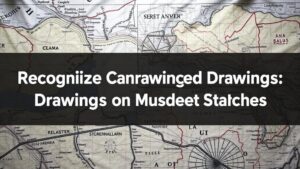Locating Treasure Using Sun and Shadow Patterns on Maps
Locating Treasure Using Sun and Shadow Patterns on Maps
The art of treasure hunting has intrigued mankind for centuries, leading countless adventurers on quests fueled by lore, legend, and maps. One lesser-known but fascinating technique involves utilizing the sun and shadow patterns to pinpoint locations on maps. This method not only illustrates a blend of astronomy and geography but also underscores the importance of natural phenomena in navigation and treasure hunting.
Understanding Sun and Shadow Patterns
Sun and shadow patterns refer to the way sunlight interacts with objects on the earth’s surface, creating shadows of varying lengths and directions throughout the day. This phenomenon is impacted by geographic location, time of year, and time of day. By understanding the angle of sunlight and the resultant shadows, treasure hunters can glean vital clues from their environment.
For example, at solar noon, when the sun is at its highest point in the sky, shadows will be at their shortest. On the other hand, during morning and late afternoon, shadows lengthen, pointing approximately towards the north or south depending on the hemisphere. This foundational knowledge is essential for interpreting maps and identifying possible treasure locations.
The Science Behind Shadow Measurements
The science of shadows is rooted in basic geometry and trigonometry. The length and direction of a shadow can be calculated using the angle of elevation of the sun. This angle varies with latitude, time of year, and local time, following an established pattern due to the earths tilt and orbit around the sun.
As a practical example, consider a location situated at latitude 30 degrees North during the summer solstice (around June 21). At solar noon, the sun’s elevation angle is approximately 83 degrees, producing relatively short shadows. In contrast, during the winter solstice, this angle drops to around 37 degrees, resulting in longer shadows. By measuring shadow lengths and angles on-site, treasure hunters can correlate this data with map locations to identify potential treasure sites.
Integrating Maps with Solar Data
To effectively locate treasure, it is crucial to integrate traditional maps with knowledge of sun angles and shadow patterns. Historical treasure maps often contain symbols that may reference specific sun positions or shadow directions during particular times of the year.
For example, a treasure map indicating that “the treasure lies beneath the ancient oak tree, where its shadow meets the riverbank at noon on the longest day” relies heavily on solar data. To decipher the treasures location, a treasure hunter must understand the relationship between the sun’s position and the resulting shadows cast by the oak tree and nearby landmarks.
Case Study: The Oak Island Mystery
One of the most intriguing treasure hunting tales is the Oak Island mystery, where numerous expeditions have sought to uncover buried treasure. Though many theories surround the island, the play of sunlight and shadows has occasionally been brought into the conversation. Some enthusiasts speculate that the treasure may be revealed or located based on solar phenomena during solstices or equinoxes, highlighting the relevance of sun and shadow patterns in treasure hunting.
This case underscores the idea that investigators need to look beyond mere physical location and incorporate celestial mechanics into their treasure hunting methodologies.
Practical Application for Treasure Hunters
For modern treasure hunters, applying sun and shadow patterns can be both an art and a science. Here are actionable steps to practice this methodology:
- Choose a date close to the equinoxes or solstices to enhance the effectiveness of your shadow measurements.
- Use a compass to determine cardinal directions accurately before measuring shadows.
- Integrate findings with historical maps, noting potential landmarks that may align with shadow patterns during specific times.
Also, utilizing digital tools and apps that calculate solar angles can assist in planning treasure hunts, allowing hunters to visualize how shadows will behave at different times of the day.
Conclusion
Locating treasure using sun and shadow patterns on maps is a fascinating blend of art, science, and adventure. By understanding the principles of solar angles and shadow formations, treasure hunters can develop a strategic approach to enhance their searches. While this technique does not guarantee success, it undoubtedly adds an intriguing layer to the treasure hunting experience, marrying history with the natural world to unveil hidden secrets of the past.



